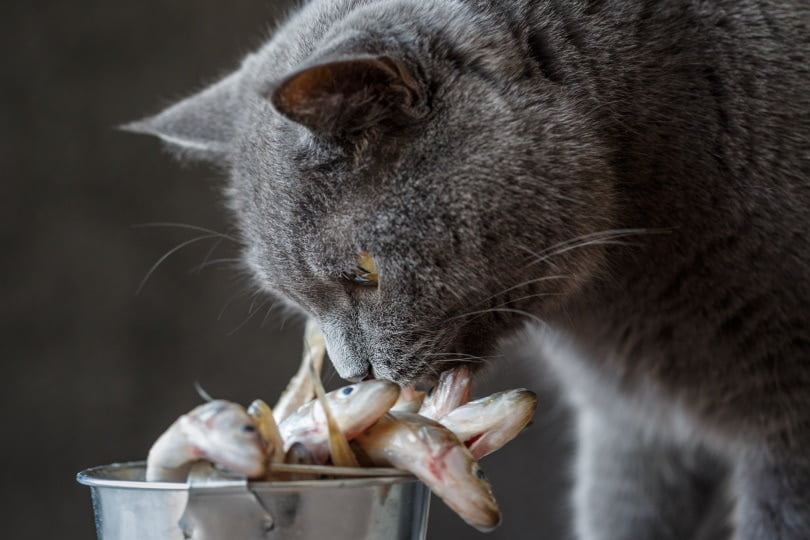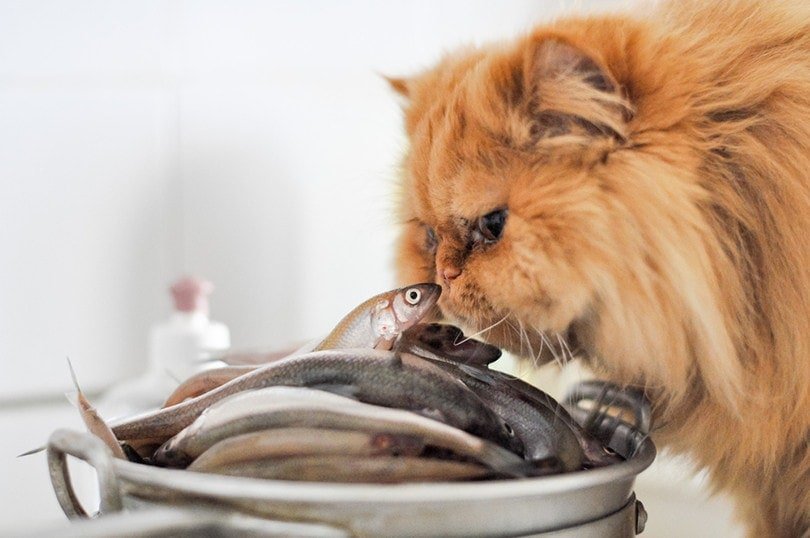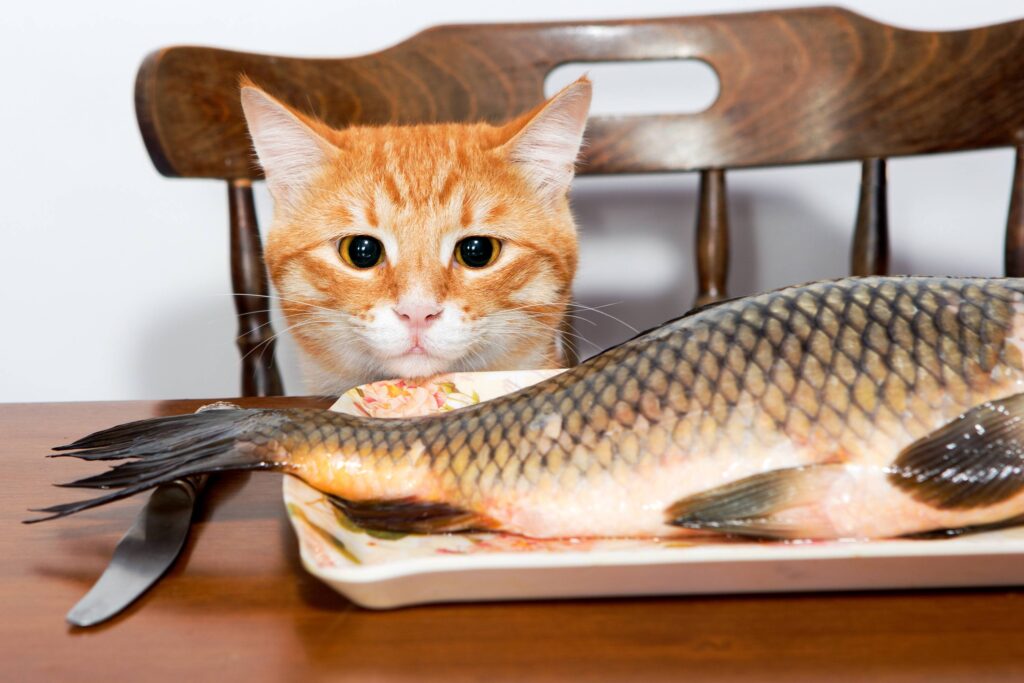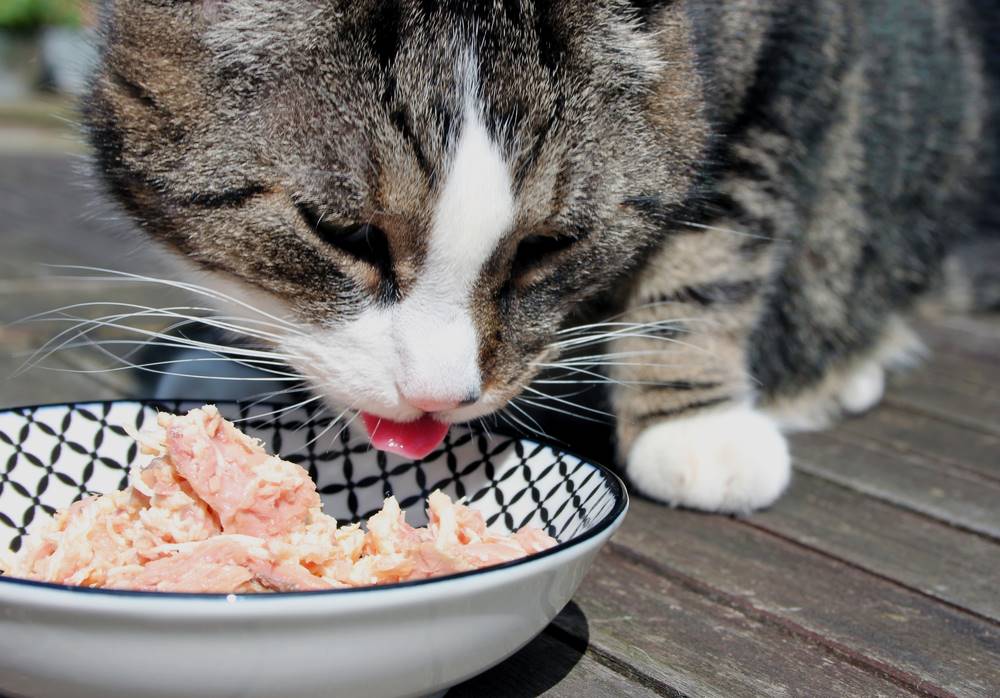How to Cook Mackerel for Cats? 3 Easy Methods You Must Know!

Incorporating fresh and nutritious ingredients into your cat’s diet is essential for their overall health and well-being. Mackerel, with its rich omega-3 fatty acids, vitamins, and minerals, can be a fantastic addition to your cat’s meal plan. But how do you cook mackerel for cats? In this article, we will guide you through the process of preparing this fish to ensure a safe and delicious meal for your feline friend.
Cooking mackerel offers a protein-packed and nutrient-dense option that promotes your cat’s overall wellness. Whether you choose to bake, grill, or steam, each cooking method provides a unique flavor profile and texture that can entice even the pickiest eaters. However, it’s important to remember that mackerel should be offered in moderation and as part of a well-rounded diet.
By understanding the benefits of mackerel and exploring various recipes, you can provide your cat with a satisfying and balanced diet. Before introducing mackerel into your cat’s meals, it’s always a good idea to consult with your veterinarian, especially if your cat has specific health conditions or dietary restrictions. So, let’s delve into the world of cooking mackerel for cats and discover how to prepare this tasty fish to delight your feline companion.
Benefits of Cooking Mackerel for Cats
Cooking mackerel for your cat is not only a tasty treat for them but also a highly beneficial addition to their diet. This fish is packed with essential nutrients that can support your cat’s health in several ways. One of the standout features of mackerel is its rich content of omega-3 fatty acids, particularly EPA and DHA. These fatty acids play a vital role in promoting healthy skin and a shiny coat for your feline companion, reducing the risk of skin irritations and excessive shedding.
In addition to its omega-3 fatty acids, mackerel is a good source of vitamins and minerals. It contains important vitamins like vitamin D, which aids in calcium absorption and bone health, and vitamin B12, which supports the nervous system and red blood cell production. Mackerel also provides minerals such as selenium and potassium, which are necessary for various physiological functions.
Furthermore, the high protein content in mackerel is essential for cats. Protein is crucial for maintaining lean muscle mass and supporting overall growth and development. It also provides the necessary amino acids that contribute to healthy organ function and energy production. By including mackerel in your cat’s diet, you can ensure they receive the quality protein they need for optimal health and vitality.
Remember that while mackerel offers numerous benefits, it should be served in moderation and as part of a balanced diet. As with any dietary changes, it’s important to consult with your veterinarian to ensure mackerel is suitable for your cat’s specific needs and to determine the appropriate portion size to maintain a healthy diet for your feline friend.
Selecting and Preparing Fresh Mackerel

To provide your cat with the best quality mackerel, it’s essential to start with fresh fish. When selecting mackerel, look for vibrant, clear eyes, shiny skin, and a fresh oceanic smell. Avoid mackerel that has a dull appearance, discolored flesh, or a strong, unpleasant odor.
Once you have chosen a fresh mackerel, it’s time to prepare it for cooking. Start by cleaning the fish thoroughly under cold running water. Use a knife or fish scaler to remove the scales, working from the tail towards the head. This not only enhances the appearance of the fish but also helps to remove any dirt or impurities on the skin.
Next, use sharp kitchen scissors to trim the fins, being cautious to avoid any accidents. These sharp and rigid fins can cause injury to both you and your cat if not properly removed. Take your time and ensure that all the fins are cleanly and neatly trimmed.
To ensure the safety of your cat, it’s important to properly gut the mackerel. Make a shallow incision along the belly and carefully remove the internal organs. Rinse the fish again under cold water to remove any remaining traces of blood or debris.
By taking the time to select and prepare fresh mackerel, you are ensuring that your cat receives a high-quality and safe meal. Fresh mackerel not only enhances the flavor of the dish but also maximizes the nutritional benefits for your feline friend. So, always prioritize the freshness and cleanliness of the mackerel when cooking for your beloved cat.
Methods of Cooking Mackerel for Cats

Mackerel is a versatile fish that offers a range of cooking possibilities for preparing a delicious and nutritious meal for your cat. Whether you choose to bake, grill, or steam mackerel, each cooking method provides a unique flavor profile and texture that can appeal to your feline friend’s taste buds.
Before diving into the different methods, it’s important to start with fresh and high-quality mackerel, ensuring the fish is free from any potential contaminants. Additionally, always remember to remove any bones from the mackerel to ensure the safety of your cat. Now, let’s explore three popular cooking methods for mackerel that will surely delight your cat’s palate: baking, grilling, and steaming.
Baking Mackerel for Cats
Baking mackerel in the oven is a popular and convenient method for preparing this fish for your cat. It not only ensures a delicious meal but also retains the nutritional value of the fish. The oven’s gentle heat helps to lock in the flavors and natural oils, making the mackerel moist and tender.
To begin the baking process, preheat your oven to around 400°F (200°C) and prepare the mackerel by cleaning and seasoning it with a sprinkle of salt and pepper. If your cat enjoys different flavors, you can consider adding cat-friendly herbs like parsley or dill to enhance the taste.
Place the seasoned mackerel on a baking sheet lined with parchment paper to prevent sticking. The parchment paper also makes cleanup easier afterward. Bake the mackerel for approximately 15-20 minutes or until it reaches an internal temperature of 145°F (63°C) and easily flakes with a fork. Remember to monitor the cooking time to prevent overcooking, as this can result in a dry texture.
Once the mackerel is cooked, allow it to cool slightly before serving it to your cat. Be cautious when handling the hot fish and ensure that there are no bones present. Your cat will enjoy the moist and tender texture of the baked mackerel, savoring the delightful flavors and benefiting from the omega-3 fatty acids and other nutrients it provides.
Grilling Mackerel for Cats
Grilling mackerel for your cat is not only a flavorful option but also a great way to introduce a smoky and slightly charred taste to the fish. Before grilling, it’s essential to prepare the mackerel by cleaning it thoroughly and removing any scales or internal organs. You can choose to marinate the mackerel in a cat-safe marinade for added flavor, or simply season it with a sprinkle of salt and pepper.
Preheat your grill to medium-high heat and lightly oil the grates to prevent the mackerel from sticking. Place the mackerel on the grill and cook for about 4-6 minutes per side, depending on the thickness of the fish and your desired level of doneness. Keep a close eye on the mackerel to prevent overcooking, as it can result in a dry texture.
Grilling mackerel imparts a beautiful texture to the fish, with a slightly crispy exterior and tender flesh inside. The smoky flavor from the grill adds an extra layer of deliciousness that many cats find irresistible. Remember to let the grilled mackerel cool down before serving it to your cat, and be cautious to remove any bones to ensure a safe dining experience.
By grilling mackerel for your cat, you can provide them with a nutritious and delectable meal that will satisfy their taste buds and contribute to their overall well-being.
Steaming Mackerel for Cats
Steaming mackerel is a fantastic method to cook mackerel for cats as it allows you to prepare a healthy and flavorful meal for your cat. This gentle cooking technique helps retain the moisture and delicate texture of the fish, ensuring that your cat enjoys a tender and succulent dish.
To steam mackerel, you’ll need a steamer basket or a steaming rack that fits inside a pot. Add a small amount of water to the pot, making sure it doesn’t touch the fish. Season the mackerel with cat-friendly herbs or spices like dill or parsley to enhance its flavor.
Place the mackerel in the steamer basket or on the steaming rack and cover the pot with a lid. Steam the fish for approximately 10-15 minutes or until it turns opaque and easily flakes apart with a fork. Be careful not to overcook the mackerel, as it can result in a dry and less appetizing texture.
Steaming mackerel is an excellent cooking method as it helps to preserve the nutrients and natural flavors of the fish. The gentle steam locks in the moisture, making the mackerel moist and enjoyable for your cat to eat. Remember to let the steamed mackerel cool down before serving it to your cat and remove any bones to ensure a safe meal.
By utilizing these different cooking methods, you can prepare mackerel in various ways to keep your cat’s meals exciting and flavorful. Each method offers its own unique appeal, and you can experiment to find the one that your cat enjoys the most.
Recipe Ideas for Mackerel-Based Meals

To make mealtime exciting for your cat, we have prepared two recipe ideas that incorporate mackerel. The first is a mackerel and vegetable mash, where you can combine cooked mackerel with a variety of cat-friendly vegetables for added nutrients and flavors. The second recipe is a mackerel and rice bowl, offering a balanced meal with the addition of a healthy carbohydrate source. These recipes provide a good starting point, and you can adjust them based on your cat’s preferences and dietary needs.
1. Mackerel and Vegetable Mash:
- Cook fresh mackerel using your preferred method (baking, grilling, or steaming) and let it cool.
- Remove any bones and flake the mackerel into small pieces.
- Steam or lightly cook cat-friendly vegetables such as carrots, peas, or green beans until they are soft and easily mashable.
- Mash the cooked vegetables and mix them with the flaked mackerel to create a nutritious and flavorful mash.
- Serve the mackerel and vegetable mash as a standalone meal or mix it with your cat’s regular wet food for added variety.
2. Mackerel and Rice Bowl:
- Cook mackerel using your preferred method and set it aside to cool.
- Prepare a small portion of cooked rice (ensure it is plain and without any seasonings or additives).
- Flake the cooked mackerel into small pieces and mix it with the cooked rice.
- For added flavor, you can include a small amount of cat-friendly herbs like parsley or sprinkle a pinch of catnip on top.
- Serve the mackerel and rice mixture in a bowl as a complete meal, providing a balance of protein from the mackerel and carbohydrates from the rice.
Remember to monitor your cat’s portion sizes and adjust the recipes accordingly to meet their individual needs. Always consult with your veterinarian if you have any concerns or questions about your cat’s diet.
Safety Considerations
When cooking mackerel for your cat, it is essential to prioritize their safety and well-being. Here are some important safety considerations to keep in mind:
- Remove bones: Take extra care to remove any bones from the mackerel before serving it to your cat. Fish bones can pose a choking hazard and potentially cause internal injuries.
- Choose plain mackerel: While mackerel in tomato sauce, oil, or brine may be available, it is best to opt for plain, fresh, or canned mackerel in water. These options are less likely to contain added seasonings, preservatives, or excessive salt, which may not be suitable for cats.
- Check the quality and source of canned mackerel: When selecting canned mackerel, read the labels carefully and choose reputable brands. Ensure that the mackerel is packed in water without any added flavorings or additives.
- Proper storage: If you have any leftovers, store them in airtight containers in the refrigerator to maintain freshness and prevent spoilage. Discard any mackerel that has been left out at room temperature for an extended period.
By following these safety considerations, you can ensure that your cat’s mackerel-based meals are enjoyable and safe for their consumption. Remember to consult with your veterinarian if you have any specific concerns or questions regarding your cat’s dietary needs.
Conclusion
Cooking mackerel for cats can be a rewarding experience that adds nutritional value and variety to their diet. By understanding the benefits of mackerel, selecting fresh fish, and following appropriate cooking methods, you can create delicious meals that contribute to your cat’s overall health and well-being. Remember to consult with your veterinarian to ensure mackerel is suitable for your cat’s specific dietary needs. So, let’s get cooking and give our beloved feline companions a tasty treat they’ll enjoy!


